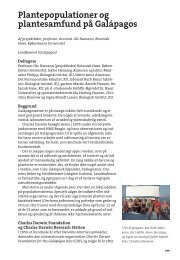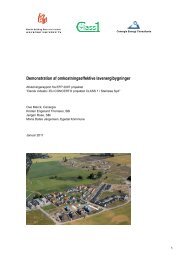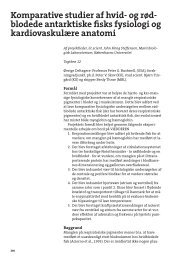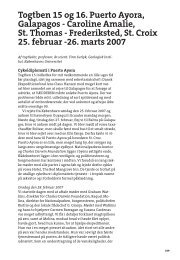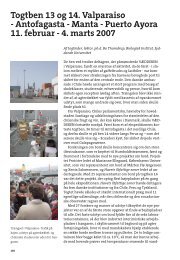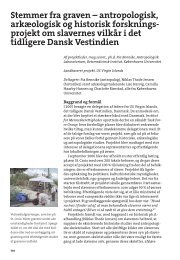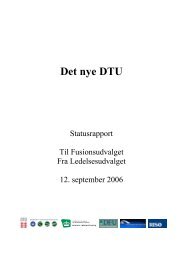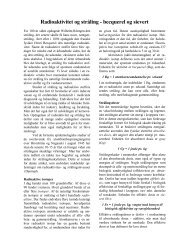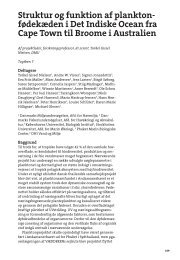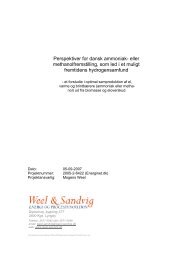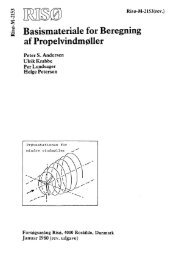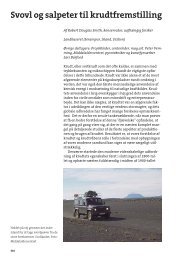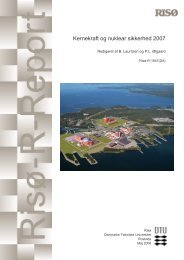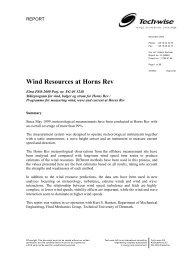Properties of hemp fibre polymer composites -An optimisation of ...
Properties of hemp fibre polymer composites -An optimisation of ...
Properties of hemp fibre polymer composites -An optimisation of ...
Create successful ePaper yourself
Turn your PDF publications into a flip-book with our unique Google optimized e-Paper software.
RESULTS<br />
The effect <strong>of</strong> defibration on <strong>hemp</strong> <strong>fibre</strong>s<br />
The defibration <strong>of</strong> <strong>hemp</strong> by cultivation <strong>of</strong> P. radiata resulted in hemicellulose, pectin<br />
and lignin degradation, and the cellulose content in the <strong>fibre</strong>s increased to 78% after 14<br />
days <strong>of</strong> cultivation (Table 2). The content <strong>of</strong> crystalline cellulose in the <strong>fibre</strong>s increased<br />
from 60 to 66 g/100 g dry matter (DM) due to the increased cellulose content after the<br />
fungal cultivation (Table 2). However the cellulose crystallinity decreased from 94 to 84<br />
g/100 g cellulose due to conversion <strong>of</strong> crystalline cellulose into its amorphous form. The<br />
recovery <strong>of</strong> cellulose was 87% after 14 days using medium scale cultivation (Table 3) so<br />
there appeared to be decay <strong>of</strong> crystalline cellulose. Using small-scale experiments for 31<br />
days there was no further cellulose decay due to the constant <strong>fibre</strong> yield (Table 3).<br />
Previous observations with transmission electron microscopy have also shown the <strong>fibre</strong><br />
wall to remain intact (Thygesen et al., 2005a). The <strong>fibre</strong> bundle strength was reduced<br />
from 950 MPa in raw <strong>hemp</strong> bast to 820 MPa after the fungal defibration (Table 2).<br />
The defibration <strong>of</strong> <strong>hemp</strong> <strong>fibre</strong>s by cultivation <strong>of</strong> C. subvermispora resulted in cellulose<br />
degradation as shown by the cellulose recovery <strong>of</strong> 87% after 14 days cultivation (Table<br />
3) and by further reduction <strong>of</strong> the <strong>fibre</strong> yield after 31 days cultivation (Table 3). The<br />
fungus formed a lot <strong>of</strong> mycelia above the water surface, while <strong>hemp</strong> stem pieces below<br />
the surface were not colonised and the obtained cellulose content was 72% (Table 2).<br />
The fungus grew well with low and medium scale cultivation resulting in reduction <strong>of</strong><br />
pH from 6 to 4.6 (Table 3). The <strong>fibre</strong> bundle strength was reduced by the cultivation to<br />
780 MPa (Table 2). At large-scale cultivation, sterilisation was insufficient resulting in<br />
lower <strong>fibre</strong> yield after 14 days cultivation (27 g/100 stem) and unchanged pH in the<br />
culture broth (Table 3).<br />
Lignin degradation was obtained during the cultivation <strong>of</strong> P. radiata on the <strong>hemp</strong> due to<br />
peroxidase enzymes, as suggested by the presence <strong>of</strong> H2O2 in the cultivation broth (Table<br />
3). Smaller <strong>hemp</strong> <strong>fibre</strong> bundles were also obtained by cultivation <strong>of</strong> P. radiata<br />
(3×10 3 μm 2 ) than by water retting and by C. subvermispora cultivation (Table 2), due to<br />
the greater degradation <strong>of</strong> the lignin rich middle lamellae between the <strong>fibre</strong>s. Water<br />
retting was a faster process than fungal defibration (Table 1) due to the lacking <strong>of</strong><br />
sterilisation and the higher temperature (35°C). However, a more variable quality was<br />
obtained due to inhomogeneous colonisation by bacteria and fungi resulting in lower<br />
<strong>fibre</strong> bundle strength (590 MPa, Table 2) and unchanged cellulose crystallinity (Figure<br />
3).<br />
128 Risø-PhD-11



